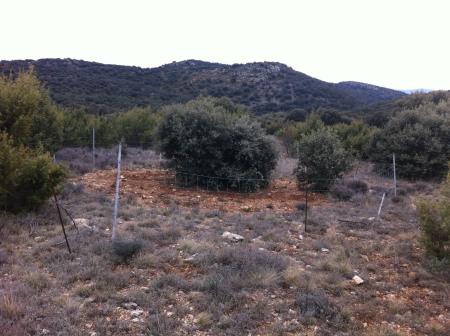
Objective:
The success of a truffle plantation relies on the presence and abundance of T. melanosporum in the roots of the seedlings the farmers plant to obtain the crop of truffles. Yet, most farmers lack the skills to distinguish a plant with the fungus from one without it. Therefore, independent testing of the plants to be planted is critical to protect the farmers from errors or fraud in the nurseries leading to the sale of plants that will never produce truffles. Our aim was to develop a test that a trained technician could perform in a short period of time to keep the cost low.
Context:
Sometimes the nurseries that produce plants mycorrized with the Black Truffle-producing fungus (Tuber melanosporum) are not as technified as would be desirable and the end product does not have the desired fungus in the root system or, worse, has another truffle of less value. This has led to many plantations not producing truffles or producing low quality truffles that do not allow the farmers to reach the break-even point in their business.
Contacts:
Carlos Colinas, carlos.colinas@udl.cat
Christine Fischer, christine.fischer@ctfc.es
Daniel Oliach, daniel.oliach@ctfc.es
Further information:
Fischer C, Colinas C (1996) Methodology for certification of Quercus ilex seedlings inoculated with Tuber melanosporum for commercial application. Proceedings of the 1 st International Conference in Mycorrhizae, Berkeley, California, August 1996.